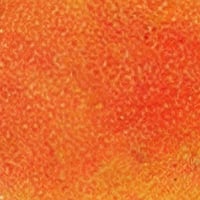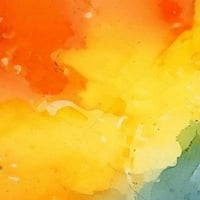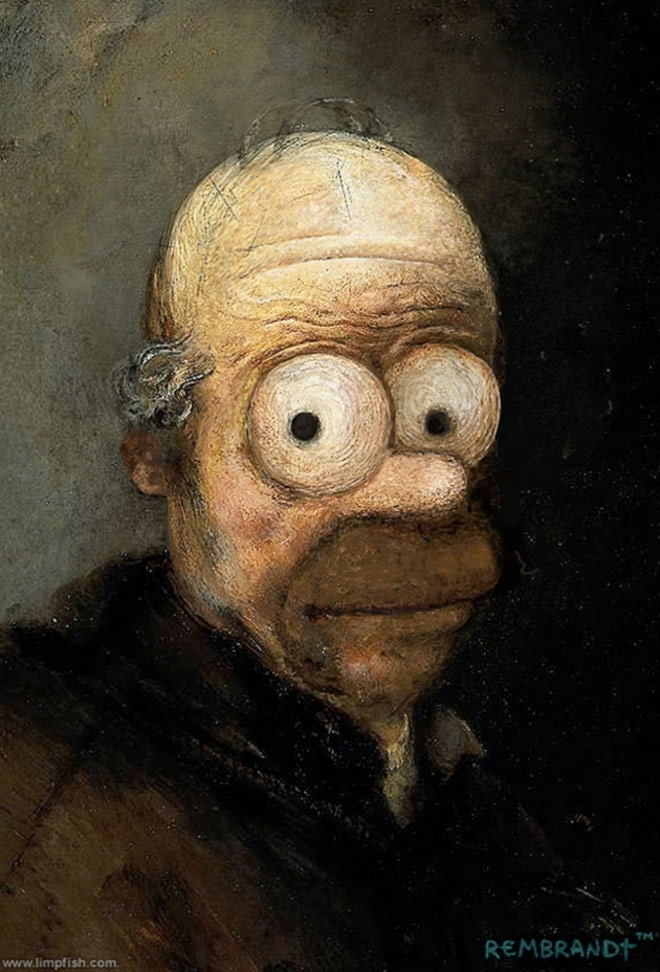Longish but interesting profile of Larry Gagosian, the world’s foremost art dealer.
Gagosian attracts artists and collectors alike because he understands the intense coupling between art and money. In 2004 the top price for a painting by Takashi Murakami at auction was $624,000. Since then, Gagosian has sold Murakamis to Cohen and others, and in November one was auctioned for $2.4m. He has repeated that trick time after time. Not long after joining his stable in 2003, the painter John Currin made his auction record of $847,500; his highest price before joining Gagosian was a little over half that. Recently Adam Sender, the head of the hedge fund Exis Capital Management, reportedly sold a Currin painting through Gagosian for $1.4m. Before Glenn Brown began showing with Gagosian, in 2004, his top price at auction was $46,000; in June 2007, a painting of his made $969,000. In May, when Anselm Reyle was still represented by Gavin Brown, his work was fetching at most around $200,000 at auction. In October, after he had joined Gagosian’s stable, a work of his made nearly four times that amount
Great 60-minute documentary on English painter Francis Bacon in six parts: one, two, three, four, five, six. The production is inventive and I’ve never seen someone answer so many seemingly penetrating questions so quickly and fluidly, save for the one he has to read off of a card produced from his pocket. (thx, dean)
Update: The program is available in one part here. (thx, marissa)
For her Mended Spiderweb project, Nina Katchadourian found spiderwebs in need of repair and fixed them with a needle and thread.
All of the patches were made by inserting segments one at a time directly into the web. Sometimes the thread was starched, which made it stiffer and easier to work with. The short threads were held in place by the stickiness of the spider web itself; longer threads were reinforced by dipping the tips into white glue. I fixed the holes in the web until it was fully repaired, or until it could no longer bear the weight of the thread.
The spiders didn’t think much of her handiwork:
The morning after the first patch job, I discovered a pile of red threads lying on the ground below the web. At first I assumed the wind had blown them out; on closer inspection it became clear that the spider had repaired the web to perfect condition using its own methods, throwing the threads out in the process. My repairs were always rejected by the spider and discarded, usually during the course of the night, even in webs which looked abandoned.
(via 3qd)
James Danziger on the photographs of the Florida teens accused of beating a classmate and filming it for YouTube.
The pictures of the accused are startling in the banality of the faces. (While the spelling of many of the names — April, Britney, Brittini, Cara, Kayla, Mercades, Stephen, Zachary bring to mind a revived Mouseketeers.) A number of the girls look surprisingly similar, but minus the prison garb, they could just as easily be reacting to a berating for poor schoolwork. The boys, who were posted as lookouts while the girls carried out the beating, look a little more ready for jail.
The pictures are fascinating in the narrow range of emotion they convey, from self-pity to sullenness, but to my mind all stop before genuine contriteness. (I’m reading this in, of course, but I have a hunch I’m right.) Yet there’s an all-American look to these kids that can only remind us how narrow the line is between good and evil.
The original photos are here.
For scientist Dr. Anne Adams (and composer Maurice Ravel), a rare disease called frontotemporal dementia caused a burst of creativity.
The disease apparently altered circuits in their brains, changing the connections between the front and back parts and resulting in a torrent of creativity. “We used to think dementias hit the brain diffusely,” Dr. Miller said. “Nothing was anatomically specific. That is wrong. We now realize that when specific, dominant circuits are injured or disintegrate, they may release or disinhibit activity in other areas. In other words, if one part of the brain is compromised, another part can remodel and become stronger.”
Some of Adams’ work can be seen here…her portrait of pi contains a touch of synesthesia. (thx, cory)
Gorgeous maps and infographics by Stefanie Posavec that map the literary geography of Jack Kerouac’s On the Road.
The maps visually represent the rhythm and structure of Kerouac’s literary space, creating works that are not only gorgeous from the point of view of graphic design, but also exhibit scientific rigor and precision in their formulation: meticulous scouring the surface of the text, highlighting and noting sentence length, prosody and themes, Posavec’s approach to the text is not unlike that of a surveyor. And similarly, the act is near reverential in its approach and the results are stunning graphical displays of the nature of the subject. The literary organism, rhythm textures and sentence drawings are truly gorgeous pieces.
The sentence drawings are really worth checking out.
Update: Posavec’s analysis of Walter Benjamin’s The Work of Art in the Age of Mechanical Reproduction is available for sale at 20x200. Apropos!
Did you know that there’s a teensy museum on the moon?
Now I find out there was already an entire Moon Museum, with drawings by six leading contemporary artists of the day: Andy Warhol, Robert Rauschenberg, David Novros, Forrest “Frosty” Myers, Claes Oldenburg, and John Chamberlain. The Moon Museum was supposedly installed on the moon in 1969 as part of the Apollo 12 mission.
I say supposedly, because NASA has no official record of it; according to Frosty Myers, the artist who initiated the project, the Moon Museum was secretly installed on a hatch on a leg of the Intrepid landing module with the help of an unnamed engineer at the Grumman Corporation after attempts to move the project forward through NASA’s official channels were unsuccessful.
Proust Was a Neuroscientist is the story of how eight writers and artists anticipated our contemporary understanding of the human brain. From the preface:
This book is about artists who anticipated the discoveries of neuroscience. It is about writers and painters and composers who discovered truths about the human mind — real, tangible truths — that science is only now rediscovering. Their imaginations foretold the facts of the future.
I enjoyed the book quite a bit so I sent the author, Jonah Lehrer, a few questions via email. Here’s our brief conversation.
Jason Kottke: Your exploration of the intersection of neuroscience and culture begins with Proust; you were reading Swann’s Way while doing research in a neuroscience lab. Where did the idea come from for a collection of people who anticipated our modern understanding of the human brain? How did you find those other stories?
Jonah Lehrer: The lab I was working in was studying the chemistry of memory. The manual labor of science can get pretty tedious, and so I started reading Proust while waiting for my experiments to finish. After a few hundred pages of melodrama, I began to realize that the novelist had these very modern ideas about how our memory worked. His fiction, in other words, anticipated the very facts I was trying to uncover by studying the isolated neurons of sea slugs. Once I had this idea about looking at art through the prism of science, I began to see connections everywhere. I’d mutter about the visual cortex while looking at a Cezanne painting, or think about the somatosensory areas while reading Whitman on the “body electric”. Needless to say, my labmates mocked me mercilessly.
I’m always a little embarrassed to admit just how idiosyncratic my selection process was for the other artists in the book. I simply began with my favorite artists and tried to see what they had to say about the mind. The first thing that surprised me was just how much they had to say. Virginia Woolf, for instance, is always going on and on about her brain. “Nerves” has to be one of her favorite words.
Kottke: Which of your characters did you know the least about beforehand? Even a seeming polymath like yourself must have a blind spot or two.
Lehrer: Definitely Gertrude Stein. I actually found her through William James, the great American psychologist and philosopher. She worked in his Harvard lab, published a few scientific papers on “automatic writing,” and then went to med-school at Johns Hopkins before dropping out and moving to Paris to hang out with Picasso. So I knew she had this deep background in science, but I had only read snippets of her work. I then proceeded to fall asleep to the same page of “The Making of Americans” for a month.
Kottke: Are there other characters that you considered for inclusion? If so, why weren’t they included?
Lehrer: Lots of people were left on the cutting room floor. I had a long digression on Edgar Allen Poe and mirror neurons. (See, for instance, “The Purloined Letter,” where Poe has detective Dupin reveal his secret for reading the minds of criminals: “When I wish to find out how wise, or how stupid, or how good, or how wicked is any one, or what are his thoughts at the moment, I fashion the expression of my face, as accurately as possible, in accordance with the expression of his, and then wait to see what thoughts or sentiments arise in my mind or heart, as if to match or correspond with the expression.”) I also had a chapter on Coleridge and the unconscious, but I think that chapter was really just me wanting to write about opium. But, for the most part, I can’t really say why some chapters survived the editing process and others didn’t. I certainly mean no disrespect to Poe. If they let me write a sequel, I’ll find a way to include him.
Kottke: I noticed that three out of the eight main characters in the book are women. Surveying the usually cited big thinkers of the 19th and 20th centuries, it would have been easy to write this book with all male characters. Is there an implicit statement in there that science would be better off with a greater percentage of women participating?
Lehrer: While I certainly agree with the idea that the institution of science would benefit from more female scientists, I didn’t choose these female artists for that reason. I don’t think you need any ulterior motive to fall in love with the work of Virginia Woolf and George Eliot. Their art speaks for itself. That said, I think the psychological insights of women like Woolf were rooted, at least in part, in their womanhood. Woolf, for instance, rebelled against the stodgy old male novelists of her day. Their fiction, she complained, was all about “factories and utopias”. Woolf wanted to invert this hierarchy, so that the “task of the novelist” was to “examine an ordinary mind on an ordinary day.” There’s something very domestic about her modernism, so that the grandest epiphanies happen while someone is out buying flowers or eating a beef stew. Women might not be able to write novels about war or politics, but they could find an equal majesty by exploring the mind.
Plus, I think Woolf learned a lot about the brain from her mental illness. As a woman, she was subjected to all sorts of terrible psychiatric treatments, which made her rather skeptical of doctors. (In Mrs. Dalloway, she refers to the paternalistic Dr. Bradshaw as an “obscurely evil” person, whose insistence that the mental illness was “physical, purely physical” causes a suicide.) Introspection was Woolf’s only medicine. “I feel my brains, like a pear, to see if it’s ripe,” she once wrote. “It will be exquisite by September.”
Kottke: Are there other books/media out there that share a third culture kinship with yours? I received a copy of Lawrence Weschler’s Everything That Rises: A Book of Convergences for Christmas…that seems to fit. Steven Johnson’s books. Anything else you can recommend?
Lehrer: I’ve stolen ideas from so many people it’s hard to know where to begin. Certainly Weschler and Johnson have both been major influences. I’ve always worshipped Oliver Sacks; Richard Powers has more neuroscience in his novels than most issues of Nature; I just saw Olafur Eliasson’s new show at SFMOMA and that was rather inspiring. I could go on and on. It’s really an exciting time to be interested in the intersection of art and science.
But I’d also recommend traveling back in time a little bit, before our two cultures were so divided. We don’t think of people like George Eliot as third-culture figures, but she famously described her novels as a “a set of experiments in life.” Virginia Woolf, before she wrote Mrs. Dalloway, said that in her new novel the “psychology should be done very realistically.” Whitman worked in Civil War hospitals and corresponded for years with the neurologist who discovered phantom limb syndrome. (He also kept up with phrenology, the brain science of his day.) Or look at Coleridge. When the poet was asked why he attended so many lectures on chemistry, he gave a great answer: “To improve my stock of metaphors”. In other words, trying to merge art and science isn’t some newfangled idea.
—
Thanks, Jonah. You can read more of Lehrer’s writing at his frequently updated blog, The Frontal Cortex.
Jason Polan, who you may remember from the series of drawings he did of every piece of art in the MoMA, has a unique 20x200 offering available. The larger editions are drawings and copies of his hand while the $2000 edition of 2 is described thusly:
I will come to your house and shake your hand. Two of these interactions will be available. After I meet you I will give you a certificate, to be signed by both you and me, stating the authentification of the encounter. This artwork is a collaboration between you and me. You will also receive a photograph that is taken the moment of our meeting.
20x200 curator Jen Bekman has more on this offering.
Jason’s work is about a lot of lofty ideas, but those ideas are grounded in the most mundane of media and happenstance. The ideas center around his ambitions to interact authentically with both the media he chooses to work in and the collectors who buy his work.
Art Grand Slam would be the perfect name for a web site showcasing the tennis-related art of Martina Navratilova. And so it is.
Almost 20 years since her last grand slam singles title, Martina Navratilova is back in action on the circuit — only this time she is turning tennis strokes into brush strokes as she helps to create a new form of contemporary art.
In its crudest and, perhaps, most joyful expression, it involves the player hitting paint-covered tennis balls at a canvas, usually marked with court lines and prepared to resemble a playing surface: clay, grass or artificial.
(via quipsologies)
 So I ditched out of “work” early yesterday for MoMA, because it was the last day of the Martin Puryear show. (This is why everyone everywhere should quit his job!) Elsewhere in the museum—on view through July—is a sprawling collection show called “Multiplex,” which is apparently about art since 1970 and, according to the opaque curator’s text, the flowering of, um, a “complicated artistic terrain.” (Yeah. Well, it’s been almost 40 years, go figure.) There are three groupings of work: abstraction, mutability, and provocation. (I dunno either!) There’s a Gursky that’s really one of the worst, an incredible Tacita Dean painted photograph, and a Julie Mehretu painting that is just wowza. (Seriously, you should go see that one.) Also, I’d never seen this Clemens von Wedemeyer video “Big Business,” a two-channel wingding that’s technically a remake of a Laurel and Hardy film, but which, more importantly, stars two really hot German guys destroying a house. It is all kinds of awesome! I wanted to watch it twice more! But that (and some other nice items) doesn’t mean this show isn’t a bizarro mess. There’s a whole lotta wall text to make their gussied up case. And the tiny end section, “provocation,” contains some of the least provocative contemporary art going. (There’s a mild Philip Guston painting from 1972! Huh?) Is it that MoMA’s collection just doesn’t have work down in the basement that could deliver some incitement?
So I ditched out of “work” early yesterday for MoMA, because it was the last day of the Martin Puryear show. (This is why everyone everywhere should quit his job!) Elsewhere in the museum—on view through July—is a sprawling collection show called “Multiplex,” which is apparently about art since 1970 and, according to the opaque curator’s text, the flowering of, um, a “complicated artistic terrain.” (Yeah. Well, it’s been almost 40 years, go figure.) There are three groupings of work: abstraction, mutability, and provocation. (I dunno either!) There’s a Gursky that’s really one of the worst, an incredible Tacita Dean painted photograph, and a Julie Mehretu painting that is just wowza. (Seriously, you should go see that one.) Also, I’d never seen this Clemens von Wedemeyer video “Big Business,” a two-channel wingding that’s technically a remake of a Laurel and Hardy film, but which, more importantly, stars two really hot German guys destroying a house. It is all kinds of awesome! I wanted to watch it twice more! But that (and some other nice items) doesn’t mean this show isn’t a bizarro mess. There’s a whole lotta wall text to make their gussied up case. And the tiny end section, “provocation,” contains some of the least provocative contemporary art going. (There’s a mild Philip Guston painting from 1972! Huh?) Is it that MoMA’s collection just doesn’t have work down in the basement that could deliver some incitement?








 So I ditched out of “work” early yesterday for MoMA, because it was the last day of the
So I ditched out of “work” early yesterday for MoMA, because it was the last day of the 
Stay Connected